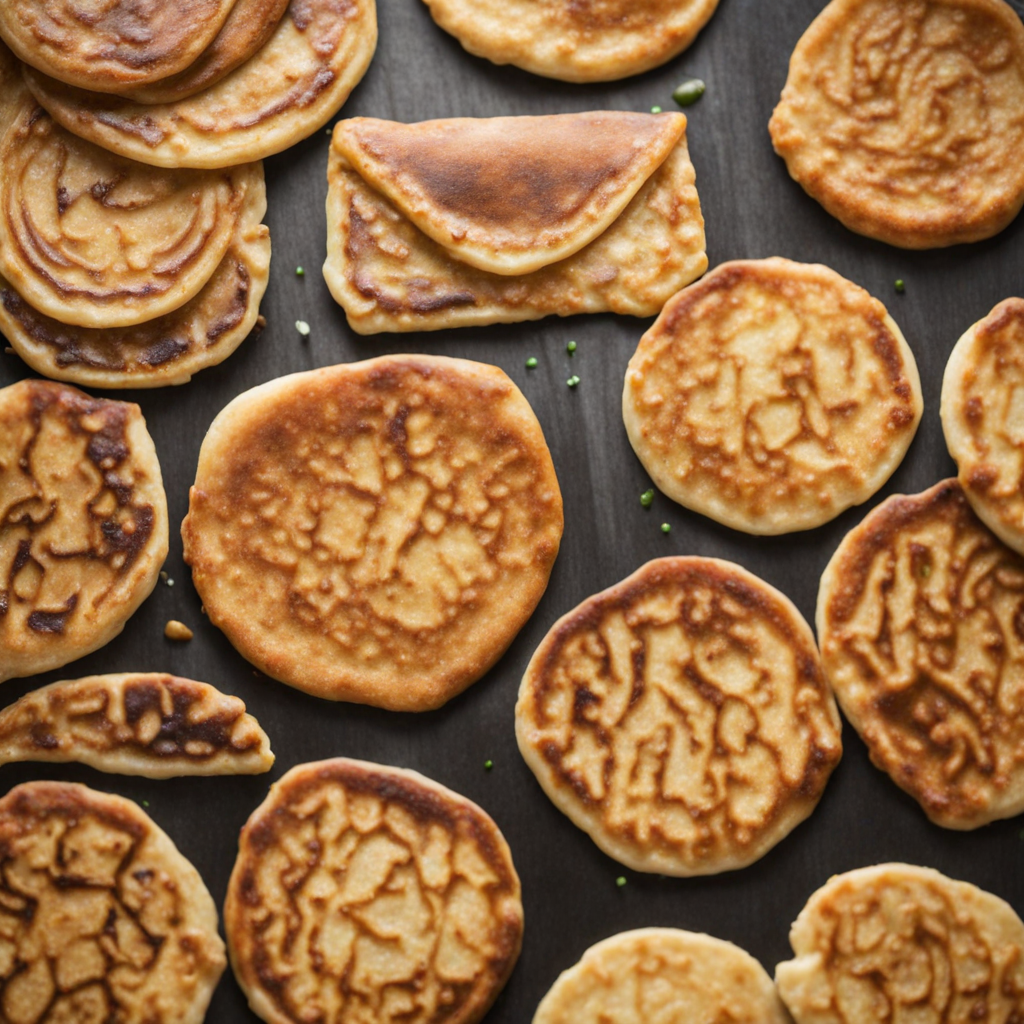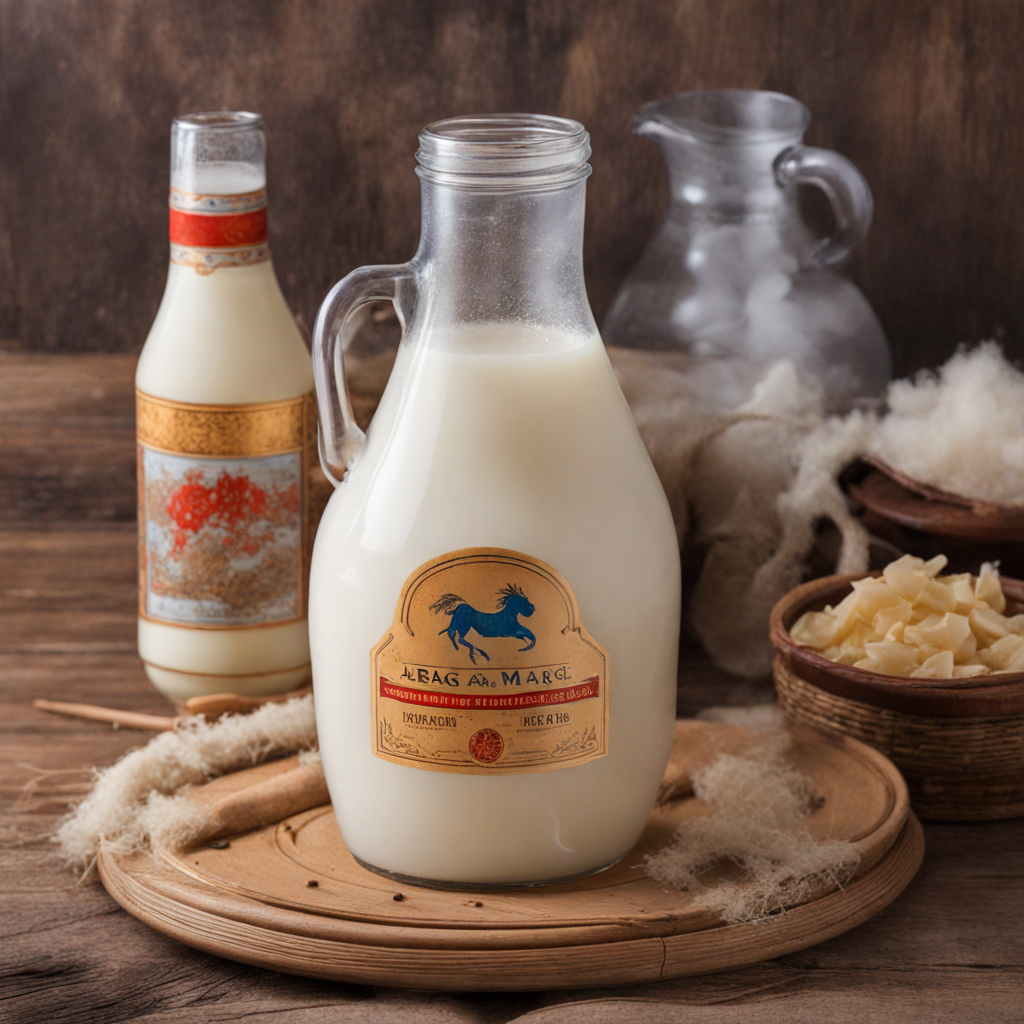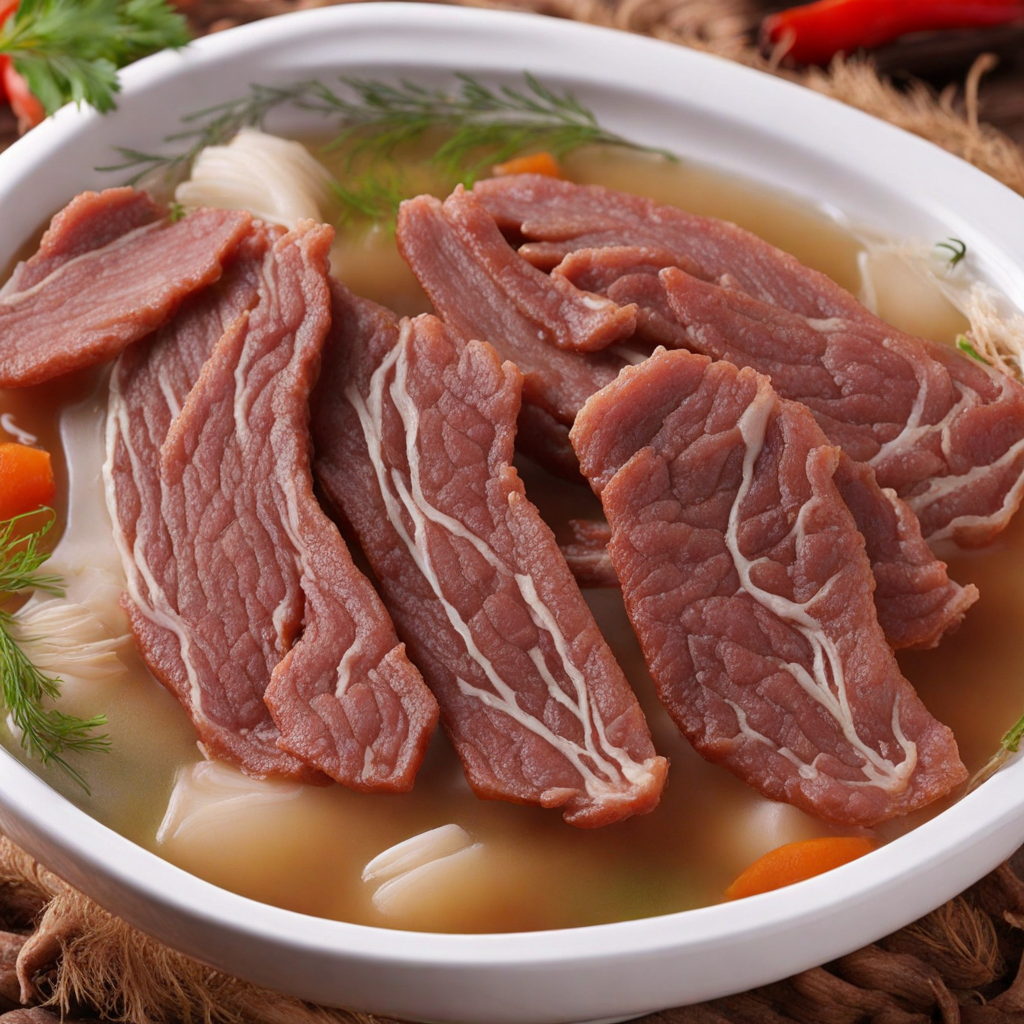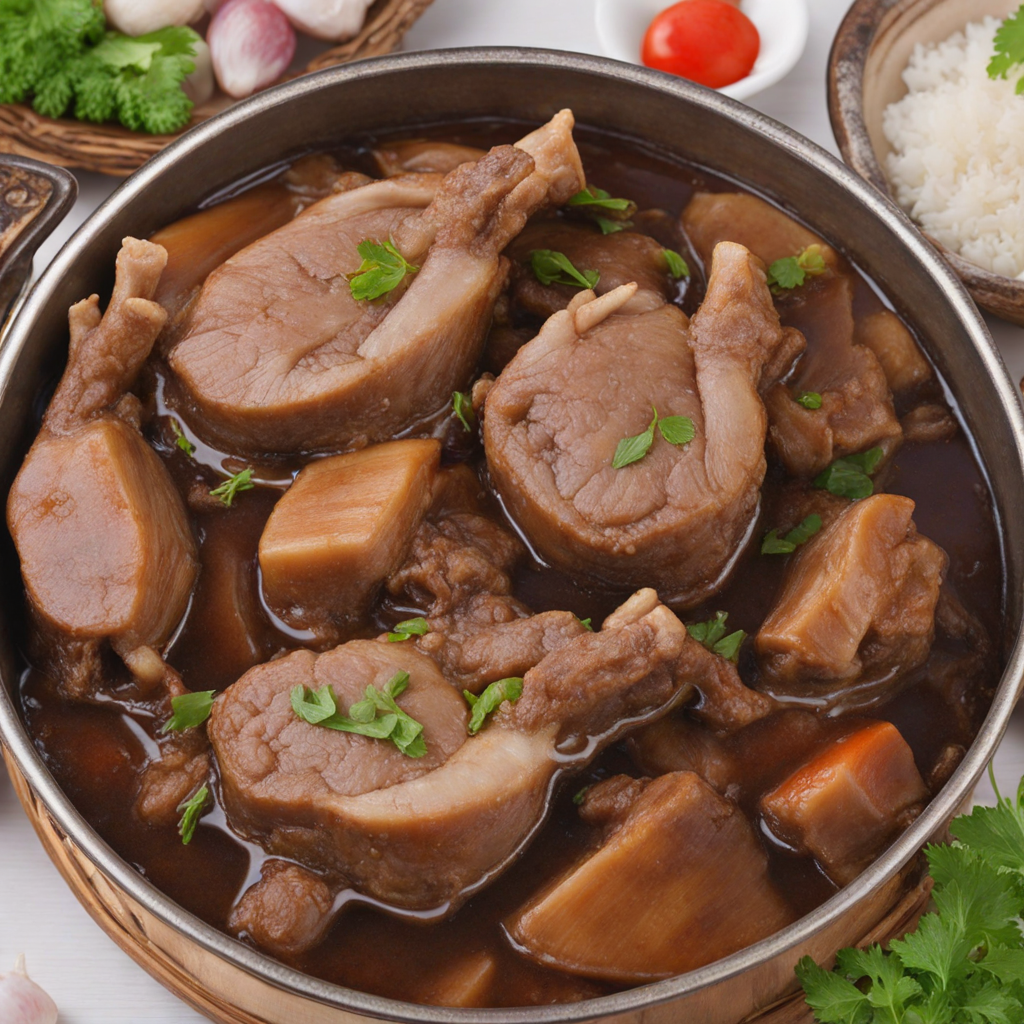Mongolian Pancake
Mongolian Pancake, known locally as "Boodog," is a delightful dish that showcases the rich culinary heritage of Mongolia. This savory pancake is made from a simple yet hearty batter consisting of flour, water, and salt, which is then flavored with various ingredients such as onions, potatoes, and minced meat, often lamb or beef. The unique aspect of Mongolian Pancake is its cooking method; it is traditionally prepared on a hot stone or in a skillet over an open flame, lending a rustic char and a satisfying crunch to its exterior while keeping the inside soft and flavorful. The texture of Mongolian Pancake is a harmonious balance between crispy and tender. As you take a bite, the outer layer offers a satisfying crunch that gives way to a warm, savory filling bursting with the umami flavors of the meat and the mild sweetness of the vegetables. The combination of spices, which may include black pepper and garlic, enhances the overall taste, making each mouthful a comforting experience that warms the soul. It’s often enjoyed with a side of tangy pickled vegetables or a dollop of sour cream, which adds an extra layer of flavor and richness. Eating Mongolian Pancake is not just about savoring the food; it's about embracing the culture and traditions of Mongolia. Often shared among family and friends, this pancake is a popular choice during gatherings and celebrations. Its rustic roots and communal nature make it a dish that brings people together, inviting you to enjoy not just the taste but the warmth of hospitality that characterizes Mongolian dining. Whether you’re enjoying it outdoors amidst nature or in a cozy setting, Mongolian Pancake promises a delightful culinary adventure that is both satisfying and memorable.
How It Became This Dish
The Journey of Монгол блин: A Culinary Icon from Mongolia Introduction The Монгол блин, or Mongolian pancake, is a beloved dish that encapsulates the spirit of Mongolian cuisine. This simple yet versatile food item is not only a staple in Mongolian households but also serves as a symbol of hospitality and cultural identity. Its origins, cultural significance, and the evolution of the dish over time reveal a rich tapestry of history that intertwines with the nomadic lifestyle, agricultural practices, and social customs of the Mongolian people. Origins of Монгол блин The roots of Монгол блин trace back to Mongolia's nomadic heritage, where the lifestyle of herding and constant movement heavily influenced food preparation and consumption. Traditional Mongolian cuisine is characterized by its reliance on animal products, especially meat and dairy, given the harsh climatic conditions and the vast landscapes that define the country. The earliest forms of pancakes in Mongolia likely emerged as a practical and nourishing solution for nomads who needed portable and easy-to-make foods. Historically, the primary ingredients for Монгол блин would have included flour, water, and salt, with variations introducing milk or eggs depending on availability. The use of whole grains and dairy reflects the Mongolian reliance on livestock for sustenance. As such, the pancakes could be cooked on a heated stone surface or a simple metal griddle over an open flame, making them easy to prepare in the field or at home. Cultural Significance Монгол блин is more than just a meal; it embodies the values and traditions of Mongolian culture. The act of making and sharing блин is often associated with gatherings and celebrations, reflecting the communal aspect of Mongolian society. Whether served at a family meal, a festival, or during a visit to a yurt, these pancakes are a symbol of generosity and togetherness. In addition to being a comfort food, Монгол блин holds a special place in Mongolian hospitality. When guests arrive, it is customary to offer them блин, often accompanied by various fillings such as cheese, meat, or vegetables. This practice not only showcases the host's culinary skills but also highlights the importance of community and connection in Mongolian culture. The sharing of food fosters bonds among families and friends, reinforcing the idea that meals are an integral part of social interaction. Evolution Over Time As Mongolia transitioned through different historical periods, so too did the preparation and presentation of Монгол блин. The influence of neighboring cultures, such as Chinese and Russian, began to shape the culinary landscape in the 20th century. With the introduction of new ingredients and cooking techniques, Монгол блин evolved from a basic staple into a dish that can be filled with a variety of flavors and textures. In urban areas, particularly in the capital city of Ulaanbaatar, the modern interpretation of Монгол блин has gained popularity among younger generations. Street vendors and restaurants often serve these pancakes with creative fillings that range from traditional meat and dairy to more contemporary offerings like vegetables and herbs. The fusion of flavors reflects a growing global influence, where traditional foods are reimagined to cater to diverse tastes. Moreover, the advent of the internet and social media has led to a renewed interest in traditional recipes. Home cooks and culinary enthusiasts are sharing their versions of блин, experimenting with exciting ingredients and modern cooking techniques while maintaining the essence of the dish. This blend of tradition and innovation has allowed Монгол блин to remain relevant in contemporary cuisine. Regional Variations While the basic concept of Монгол блин remains consistent, regional variations have emerged, showcasing the diversity of ingredients and cooking methods across Mongolia. In rural areas, where access to fresh produce may be limited, the pancakes might be filled predominantly with meat or dairy products, reflecting the local agricultural practices. In contrast, urban areas may see more innovative fillings, incorporating seasonal vegetables and international flavors. One popular regional variation includes the use of buckwheat flour, particularly in areas where this grain is cultivated. Buckwheat блин has a distinct nutty flavor and is often served with rich sauces or yogurt, providing a unique twist to the traditional recipe. Another variation can be found among the Kazakh communities in Mongolia, where pancakes are sometimes stuffed with rich meat fillings and served with a side of sour cream. Modern-Day Relevance In today’s fast-paced world, Монгол блин continues to hold a cherished spot in the hearts and stomachs of Mongolian people. With the rise of globalization, there has been an increased interest in Mongolian cuisine both locally and internationally. Restaurants specializing in Mongolian dishes have emerged, offering a menu that prominently features блин alongside other traditional foods such as buuz (steamed dumplings) and khuushuur (fried meat pies). The dish has also found its way into the global culinary scene, with chefs incorporating it into fusion cuisines. Food festivals and cultural events promote Mongolia’s rich culinary heritage, allowing international audiences to experience the unique flavors of Монгол блин. This growing recognition is not only a source of pride for the Mongolian people but also an opportunity to share their culture with the world. Conclusion The story of Монгол блин is a reflection of Mongolia’s rich cultural heritage, adaptability, and communal spirit. From its humble beginnings as a practical food for nomadic herders to its modern interpretations and international recognition, this simple pancake continues to be a beloved dish that unites generations and cultures. As Mongolia moves forward, the evolution of Монгол блин is a testament to the enduring nature of food as a cultural expression, a source of comfort, and a means of fostering connections among people. Through each bite, one can taste the history and warmth of Mongolian hospitality, making Монгол блин not just a meal, but a celebration of life itself.
You may like
Discover local flavors from Mongolia







